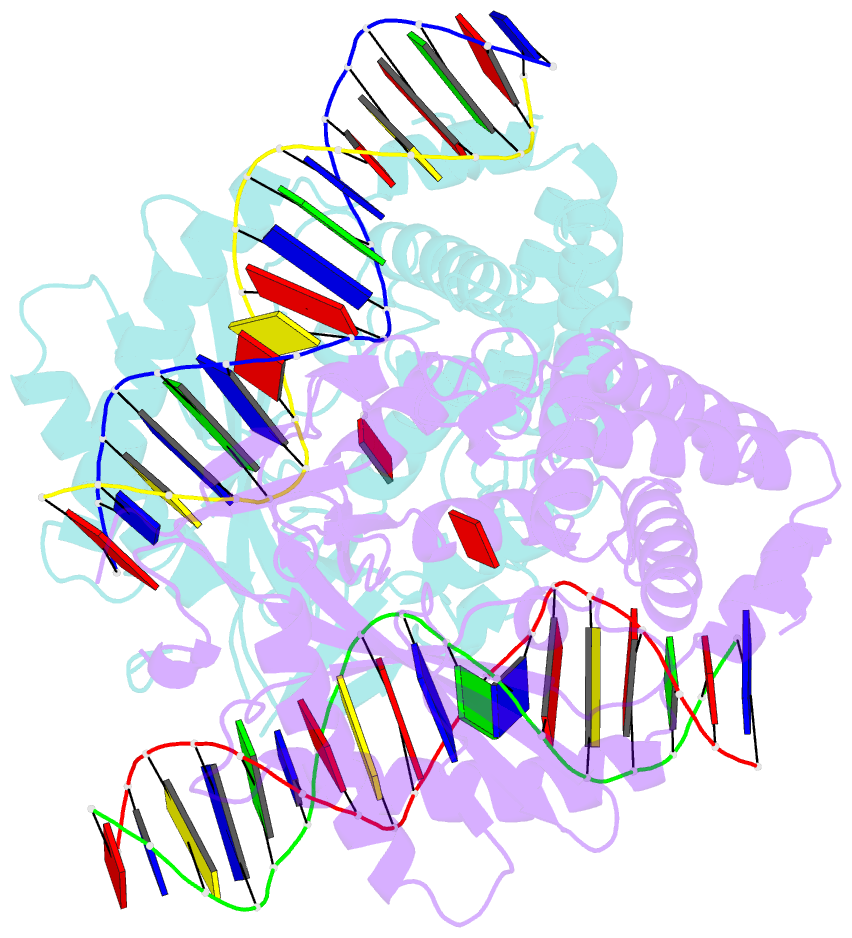Summary information and primary citation
- PDB-id
- 8gir; SNAP-derived features in text and JSON formats;
DNAproDB
- Class
- immune system,transferase-DNA
- Method
- X-ray (2.5 Å)
- Summary
- Structure of ternary complex of mouse cgas with dsDNA and bound atp: with 10mm mg2+ and 0.2mm mn2+
- Reference
- Wu S, Gabelli SB, Sohn J (2024): "The structural basis for 2'-5'/3'-5'-cGAMP synthesis by cGAS." Nat Commun, 15, 4012. doi: 10.1038/s41467-024-48365-3.
- Abstract
- cGAS activates innate immune responses against cytosolic double-stranded DNA. Here, by determining crystal structures of cGAS at various reaction stages, we report a unifying catalytic mechanism. apo-cGAS assumes an array of inactive conformations and binds NTPs nonproductively. Dimerization-coupled double-stranded DNA-binding then affixes the active site into a rigid lock for productive metal•substrate binding. A web-like network of protein•NTP, intra-NTP, and inter-NTP interactions ensures the stepwise synthesis of 2'-5'/3'-5'-linked cGAMP while discriminating against noncognate NTPs and off-pathway intermediates. One divalent metal is sufficient for productive substrate binding, and capturing the second divalent metal is tightly coupled to nucleotide and linkage specificities, a process which manganese is preferred over magnesium by 100-fold. Additionally, we elucidate how mouse cGAS achieves more stringent NTP and linkage specificities than human cGAS. Together, our results reveal that an adaptable, yet precise lock-and-key-like mechanism underpins cGAS catalysis.





